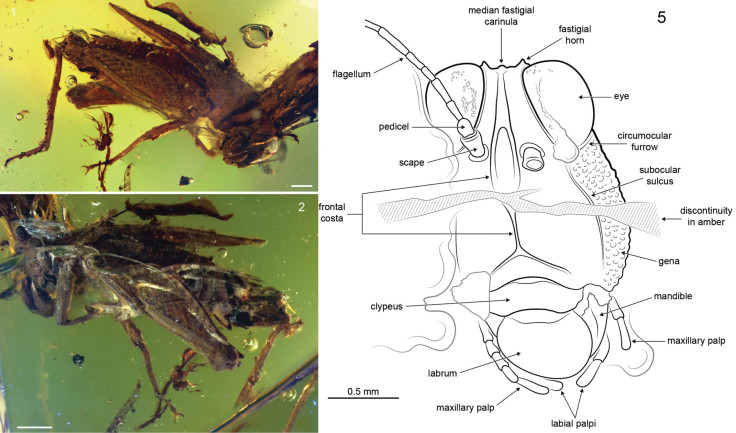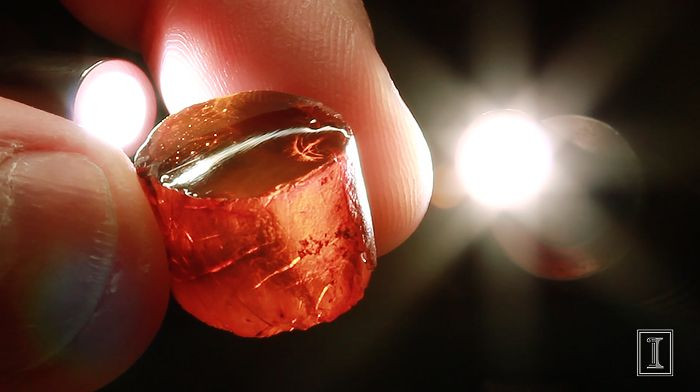Fossilized Grasshopper Found In Amber Accumulation Offers Insights Into Ancient Insects

Scientists, studying a massive accumulation of 20-million-year-old amber found in the Dominican Republic more than 50 years ago, have discovered a tiny fossilized grasshopper that is believed to have existed 18 million to 20 million years ago.
The findings, published in the journal ZooKeys on Wednesday, are expected to offer fresh insights into ancient tropical insects and the world they inhabited. According to the scientists, the grasshopper was as small as a rose thorn and it fed on moss, algae and fungi. The specimen is considered to be remarkable as it represents a midway stage of evolution in the life of its subfamily of locusts, known as the “Cladonotinae.”
The most ancient representatives of this particular group featured wings while their modern counterparts do not, scientists said, adding that the newly discovered insect has what appear to be vestigial wings that had already lost their primary function.
“Grasshoppers are very rare in amber and this specimen is extraordinarily well-preserved,” Sam Heads, a paleontologist at the Illinois Natural History Survey, or INHS, said in a statement.

Heads and his colleagues found the new specimen a few months after they began screening more than 160 pounds of Dominican amber collected in the late 1950s by Milton Sanderson, a former entomologist at the INHS. Heads has named the fossilized locust “Electrotettix attenboroughi” for Sir David Attenborough, a British naturalist and filmmaker.
In addition to the tiny grasshopper, the researchers also found mating flies, stingless bees, gall midges, Azteca ants, bark beetles, mites, spiders and even a mammal hair. According to the researchers, the locust was found in a fragment that also contained wasps, ants, midges, plant remnants and fungi, providing researchers with clues about the ancient creatures as well as the nature of their prehistoric habitat.
“Fossil insects can provide lots of insight into the evolution of specific traits and behaviors, and they also tell us about the history of the time period,” Heads said. “They’re a tremendous resource for understanding the ancient world, ancient ecosystems and the ancient climate - better even, perhaps, than dinosaur bones.”
© Copyright IBTimes 2024. All rights reserved.






















